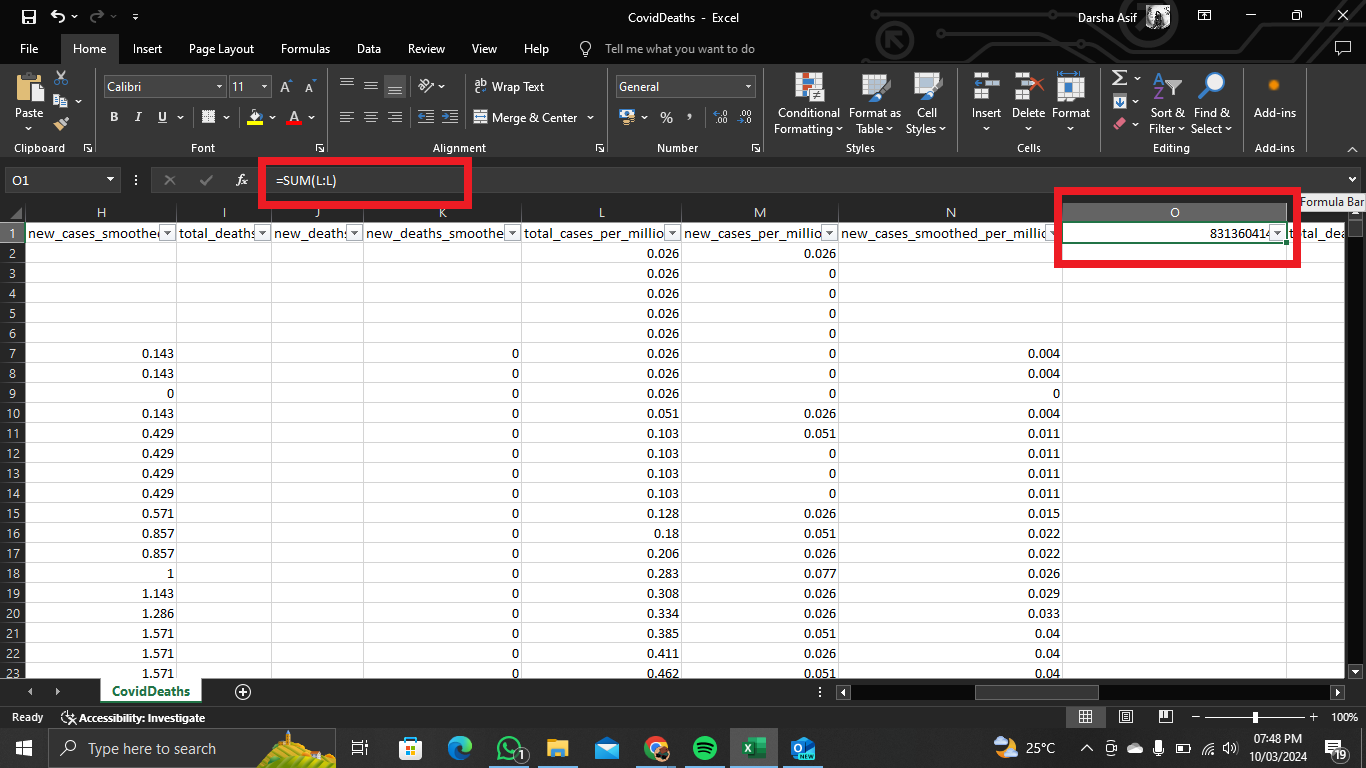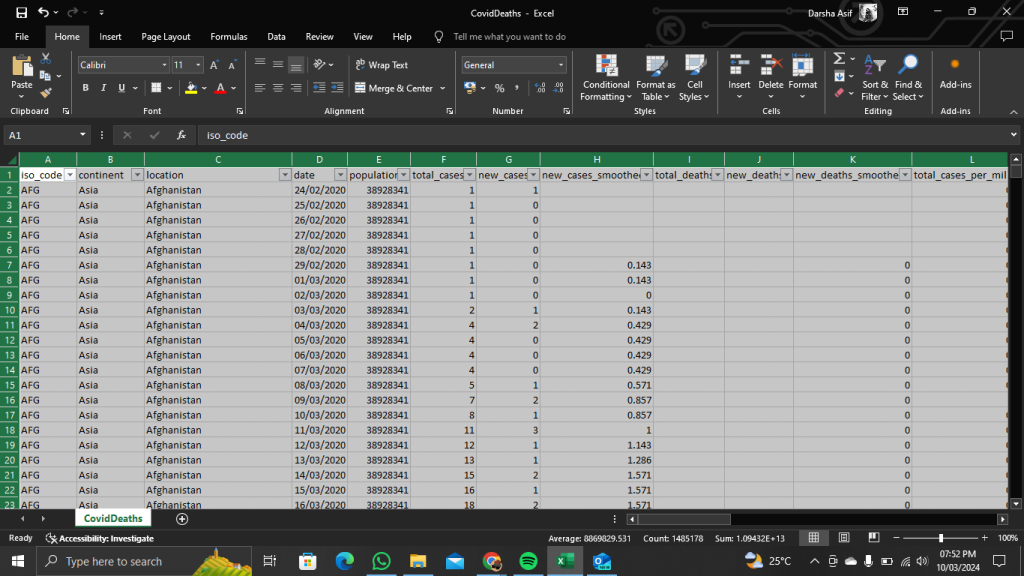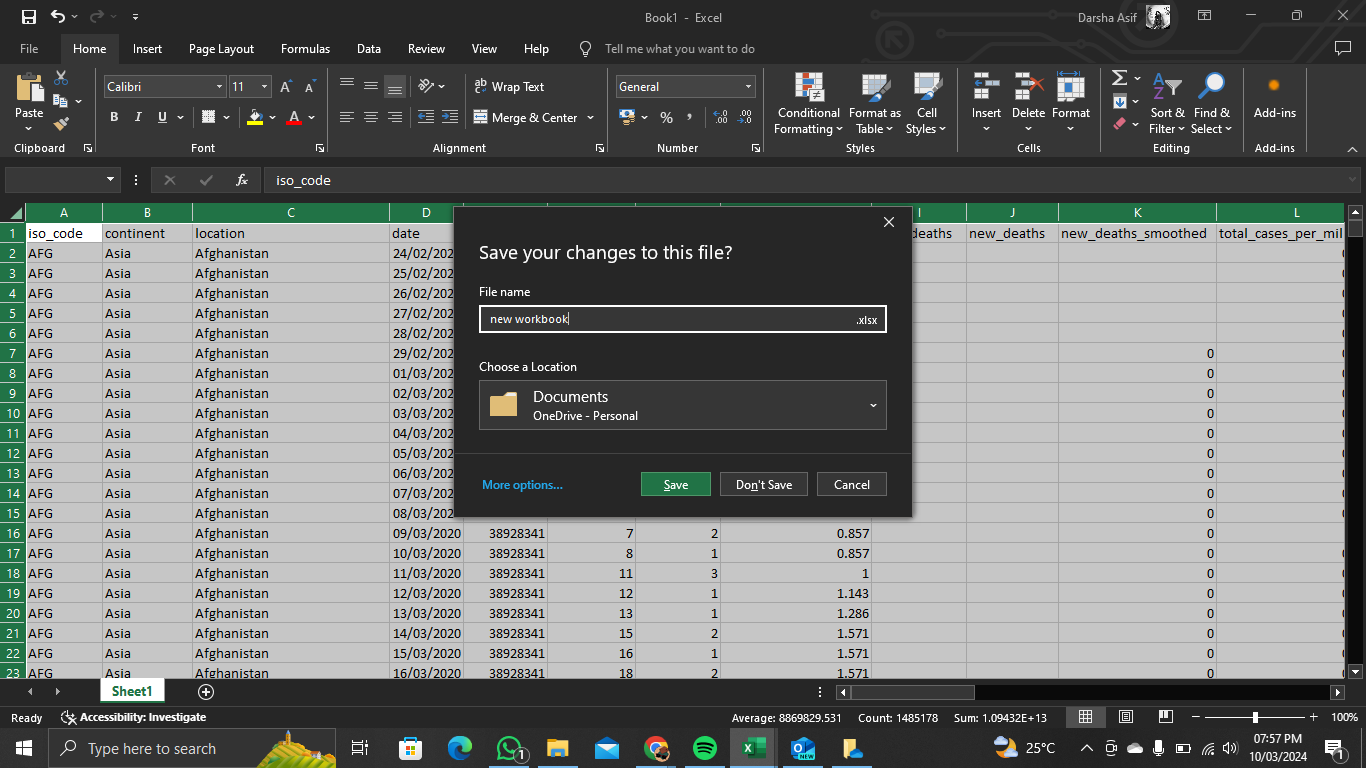7 Steps: How to Save Excel Workbook Without Formulas
- Removing formulas in Excel enhances data security, simplifies sharing, and ensures data integrity.
- To remove formuals, duplicate the worksheet, select all cells, and paste values to replace formulas with calculated results.
- While removing formulas can enhance data security and prevent unintended changes, it's essential to ensure that the data integrity is maintained and that critical calculations are not compromised during the process.
Saving Excel workbooks without formulas is vital for data security and confidentiality. Removing formulas keeps sensitive calculations hidden, ensuring only calculated values are visible. This practice enhances data protection and streamlines sharing, safeguarding the integrity of your information while retaining its analytical value.
In this guide, we explore the steps to save Excel workbooks without formulas and highlight their significance in data management. Let’s delve into the process and understand its benefits.

Table of Contents
Can You Save Excel Workbook Without Formulas?
Yes, you can save an Excel workbook without formulas by copying the worksheets containing formulas to a new workbook and pasting only the values calculated by the formulas.
↪ Uses of Saving Excel Workbook Without Formulas
- Enhanced Security: Protect sensitive formulas and prevent accidental modification.
- Simplified Sharing: Share data without revealing underlying formulas or calculations.
- Data Integrity: Ensure that data remains intact without the risk of unintended formula changes.
READ MORE: How to Hide Columns in Excel – 6 Easy Ways With Pictures ➜
How to Remove Formulas from Excel Workbook
Here’s how you can remove formulas from an Excel workbook:
Step 1: Open Original Workbook
Open your original Excel workbook containing sensitive formulas.

Step 2: Select Worksheet
Navigate to the tab of the worksheet that contains sensitive formulas.

Step 3: Move or Copy
Right-click on the worksheet’s tab and select “Move or Copy” from the popup menu.

Step 4: Choose Destination Workbook & Save
Select “(new book)” from the “To book” drop-down list. Ensure the “Create a copy” check box is selected and click “OK.”

A new Excel workbook is created with the copied worksheet pasted into it. Save this new workbook with a different name to preserve the original workbook.
Step 5: Select All Cells
Select all the cells on the copied worksheet by pressing Ctrl+A or clicking the square in the upper-left corner of the cells.

Step 6: Paste Values
Now, click the “Values” button in the “Paste Values” section of the drop-down menu. The worksheet now contains only the results from the formulas in the original worksheet, not the formulas themselves.

Follow the same procedure for each worksheet in the original workbook from which you want to remove the formulas.
Step 7: Save Workbook
Press Ctrl + S (Windows) or Command + S (Mac) to save the workbook. Enter a file name and select “Save” to confirm the action. Make sure the workbook is saved in “.xlsx” format to maintain compatibility for recipients who need to view or edit the sheet in Excel.

Google Sheets vs. Excel at Saving Workbook Without Formulas
Google Sheets and Excel allow users to manipulate data by removing formulas and pasting values, providing flexibility and control over spreadsheet calculations and outputs. Both platforms offer similar functionality for removing formulas and pasting values.
In Google Sheets, the process involves duplicating the sheet, selecting the entire duplicated sheet, and then pasting special to paste values. This method is straightforward and intuitive within the Google Sheets environment.
In Excel, the process is quite similar. Users duplicate the worksheet, select all cells, and then paste special to paste values. While the steps differ slightly due to interface variations, the overall concept remains consistent between the two platforms. The decision between the two platforms ultimately depends on user preference, familiarity, and specific collaboration and data analysis requirements.
READ MORE: How to Get Dark Mode in Google Sheets – Desktop & Mobile ➜
Final Words
In summary, the guide has outlined how to remove formulas and paste values in Excel, helping users manage data securely and efficiently. By mastering these steps, you can ensure your spreadsheet data remains accurate and accessible while simplifying collaboration. With these insights, you can confidently manage spreadsheets, improving productivity and task effectiveness.
FAQs
Yes, you can undo the removal of formulas by using the “Undo” feature immediately after pasting values. Simply press Ctrl + Z (Windows) or Command + Z (Mac) to undo the action.
Yes, you can manually re-enter formulas after pasting values. However, this process may be time-consuming, especially for large datasets.
No, removing formulas only affects the calculation logic within the spreadsheet. The original data remains intact.
Yes, you can selectively remove formulas by manually copying and pasting values for specific ranges of cells rather than the entire worksheet.
 Reviewed by
Reviewed by 




